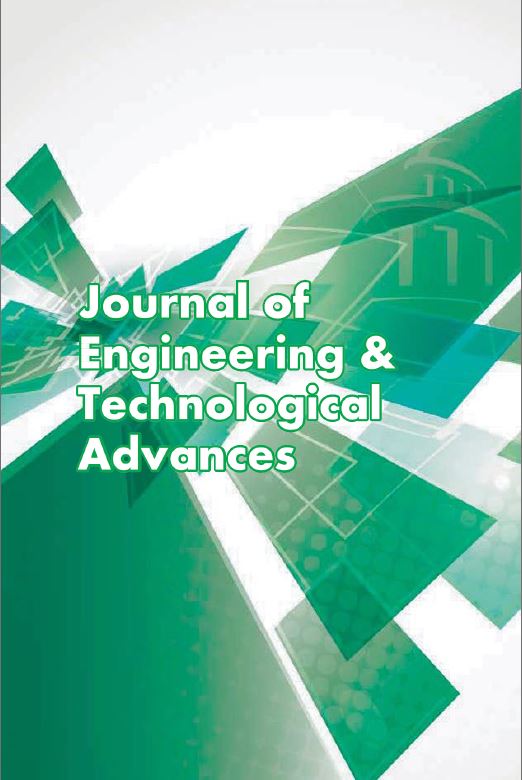Abstract
This paper addresses the critical problem of optimizing weld geometry and valve location in pressure vessel to minimize stress concentration and enhance structural integrity. The study focuses on a thin-walled pressure vessel with a cylindrical body and a spherical head, analysing how different weld and valve configurations impact the stress distribution. The design adheres to the ASME Boiler and Pressure Vessel Code IX, with steel as the base material and EX80XX for the welds. The objectives are to identify the safest weld arrangement and the optimal valve location to reduce structural risks. A combination of theoretical stress analysis and Finite Element Analysis (FEA) was used to evaluate the pressure vessel under a uniform internal pressure of 2 MPa. The study investigated seven valve positions and four weld lines arrangement. Results show that placing the valve at the centre of the spherical head minimizes the stress concentration, while the safest weld configuration is a single weld line at the interface between the cylindrical and the spherical sections. The study further explores the combined effects of multiple valves and weld lines, concluding that placing valves and welds in the cylindrical section increases structural risk compared to the spherical section. This research offers novel insights into the design of pressure vessel, offering optimal weld and valve configurations to enhance safety and performance.
References
Bahadur, R., Mittal, V. K., & Angra, S. (2018). Stress analysis of pressure vessel nozzle using FEA. International Journal of Engineering Research and Technology, 6(16), 1-6.
Budynas, R. G., & Nisbett, J. K. (2011). Shigley's Mechanical Engineering Design (Vol. 9). New York: McGraw-Hill.
Diamantoudis, A. T., & Kermanidis, T. (2005). Design by analysis versus design by formula of high strength steel pressure vessels: A comparative study. International Journal of Pressure Vessels and Piping, 82(1), 43-50.
Fricke, S., Keim, E., & Schmidt, J. (2001). Numerical weld modelling - a method for calculating weld-induced residual stresses. Nuclear Engineering and Design, 206(2-3), 139-150.
Hodge, J. C. (1936). The welding of pressure vessels. Journal of the American Society for Naval Engineers, 48(4), 498-522.
Kshitij, K. S., & Sankalp, V. (2019). Structural analysis of weld joints using FEA and response surface optimization. International Journal for Research in Applied Science and Engineering Technology, 7(8), 680-688.
Ladokun, T., Nabhani, F., & Zarei, S. (2010, July). Accidents in pressure vessels: hazard awareness. In Lecture Notes in Engineering and Computer Science: Proceedings of the World Congress on Engineering 2010. International Association of Engineers.
Logan, D. L. (2017). A first course in the finite element method. Sixth Edition. Australia: Cengage Learning.
Megyesy, E. F. (2001). Pressure vessel handbook. Twelfth Edition. Tulsa, Oklahoma: Pressure Vessel Publishing.
Moss, D. R. (1987). Pressure vessel design manual: illustrated procedures for solving every major pressure vessel design problem. Houston: Gulf Pub. Co.
Niranjana, S. J., Patel, S. V., & Dubey, A. K. (2018, June). Design and analysis of vertical pressure vessel using ASME code and FEA technique. In IOP Conference Series: Materials Science and Engineering (Vol. 376, No. 1, p. 012135). IOP Publishing.
Pullarcot, S. K. (2002). Practical Guide to Pressure Vessel Manufacturing. CRC Press.
Romero-Tello, P., Lorente-López, A. J., & Gutiérrez-Romero, J. E. (2025), Structural design optimization of pressure hull using genetic algorithm and finite element analysis. International Journal of Structural Integrity, 16(1), 60-84.
Singh, R. K., Sarda, A., & Chandrakar, P. (2023). A comprehensive study of efficient design of pressure vessels for improved boiler performance. International Journal of Analytical, Experimental and Finite Element Analysis, 10(2), 46-49.
Solangi, E., Albarody, T. M. B., Al-Challabi, S., Khan, J. A., & Ali, S. (2024). Design and failure analysis of a vacuum pressure vessel for aerospace applications using finite element analysis (FEA). Engineering, Technology & Applied Science Research, 14(6), 17888–17893.
Spence, J., & Tooth, A. S. (2012). Pressure Vessel Design: Concepts and Principles. CRC Press.

This work is licensed under a Creative Commons Attribution-NonCommercial-NoDerivatives 4.0 International License.
Copyright (c) 2024 Array

